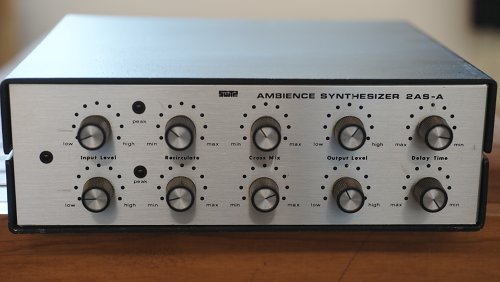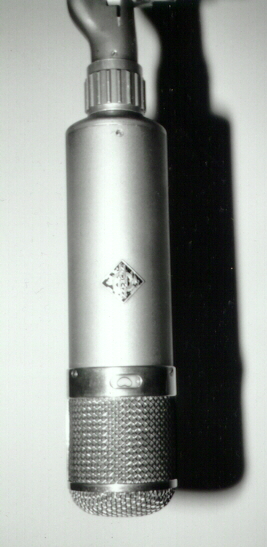Bi-amped, 3-way studio monitors (Bozak lo, Eminence mids, CTS hi) with 200/100watt 700west amps & electronic x'oversModular analog synth w/digital key scan - more closely resembled the Buchla, than the Moog (output frequency directly proportional to control voltage). PAIA modules would i'fce with it quite wellRing modulator signal processor (quite effective on B3 organ and electric oboe!)Instrument pitch-to-voltage converter (to i'face instruments with the synth)Stereo 4-band compressor700west-redesigned Teletronics LA-3A compressor/limiters (Vactrol control elements).3 stretched plate reverb units with 700west 30 watt driving systems (each plate had 4 active pickups on board). The wooden frames were a mistake, tho. Seasonal humidity changes would require periodic re-alignment of the drivers! Only harpsichords are worse!
Magnecord PT6-AH 2-track 1/4" recorder - 15IPS3M M23 4-track 1/2" recorderTascam 70-8 8-track 1/2" recorder w/DBX noise reductionTascam 25-2 1/4" 2-track submaster recorderInterface Electronics Stevenson 12 X 8 consoleAllison Labs compressor/limitersKepex gate unitsEventide Harmonizer/pitch shifterOctave-band graphic equalizers
Sony C-37A - (sold to B.J. Rogers)700west C7 double-button cardioid condensersB&O stereo ribbon micAKG C452 modular mics w/cardioid & omni capsulesE-V 1711 electret condenser mics
AKG D190ESennheiser MD 421Shure SM70 omniE-V RE16
Wurlitzer electric piano1934 Story & Clark studio upright piano.
The acoustic piano you hear on both of the Vol. I & II recordings is a Story & Clark - built in 1934, the year I was born. Interestingly, we both were destined to cross paths later!
Originally required for my piano class at school, it was purchased from Kenny Jagger, (a popular local TV keyboard celebrity back in the mid-50s). The instrument was a studio upright, as I couldn't afford a grand.
It later became our 700 West house piano, complete with a set of my piezo pickups which were most useful when a loud group decided to use a live acoustic piano on their rhythm beds. Plus, its carefully lacquered hammers gave this instrument a very distinctive sound, quite suited to the recording process. I quickly learned to keep it in good tune, occasionally detuning it to match groups' out-of-tune fixed pitch instruments.
The next time I needed it (15 years following our studio closure), the instrument still was in perfect tune with itself and had only slipped from A=440 to A=438! And this without the benefit of air conditioning!
One Great Box!!
Mo - 2018-02-24
Korg K2 synthElka string machine.



